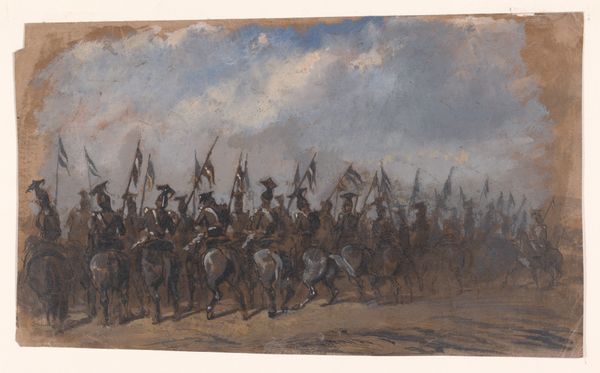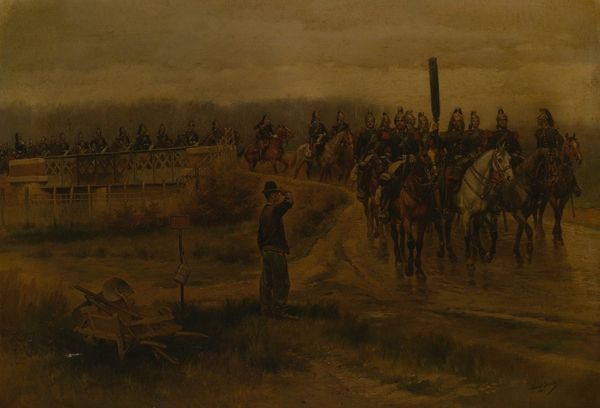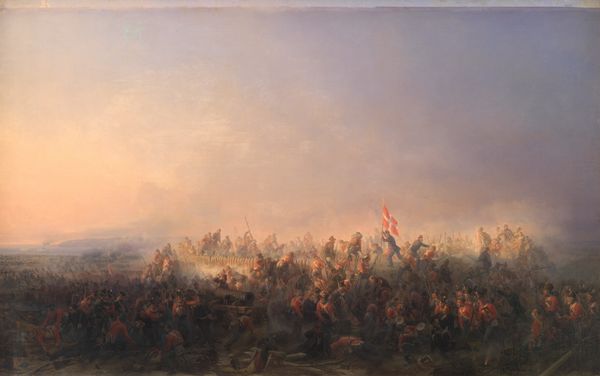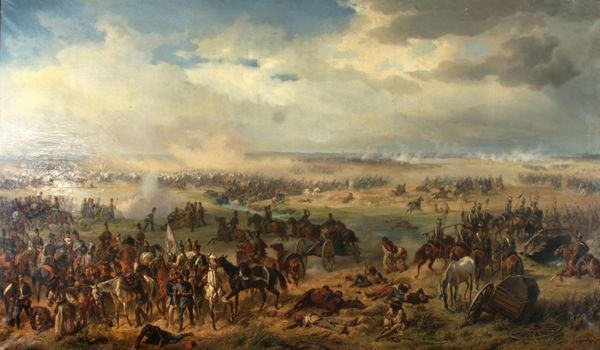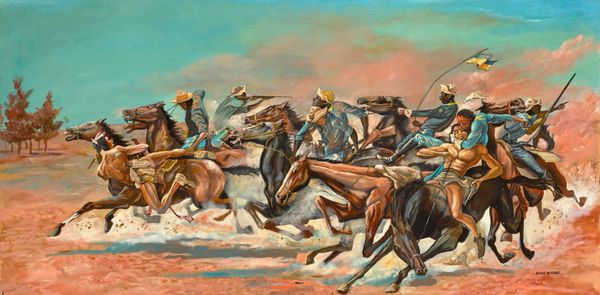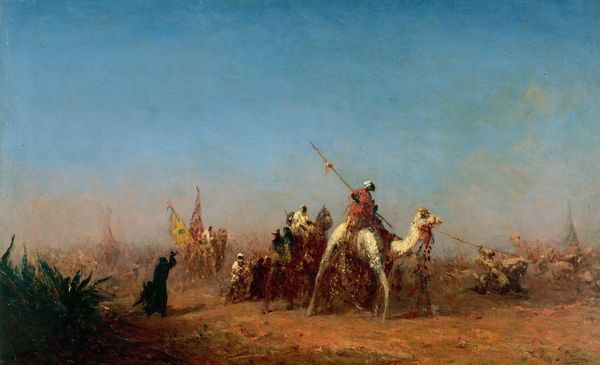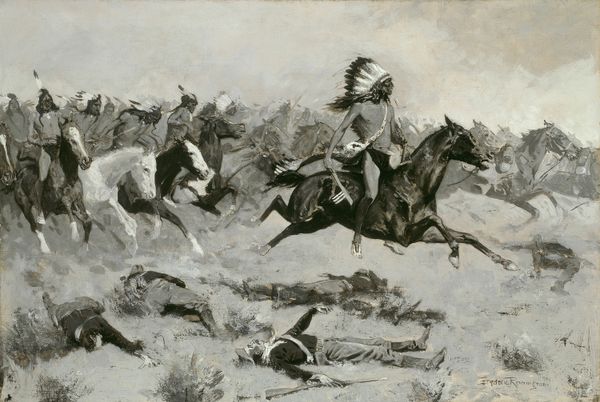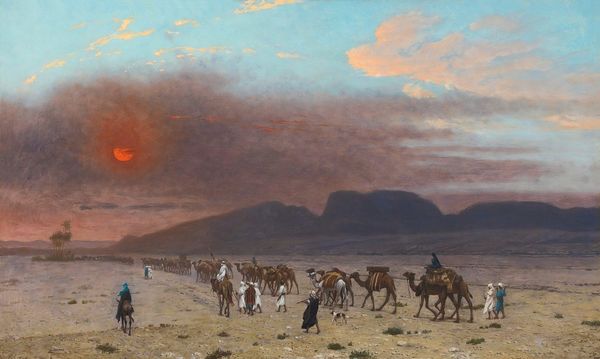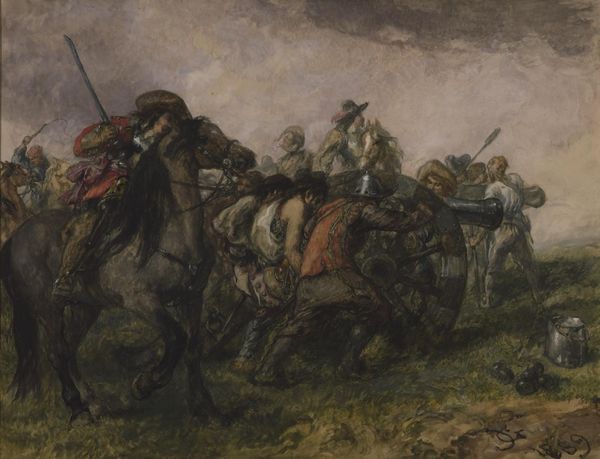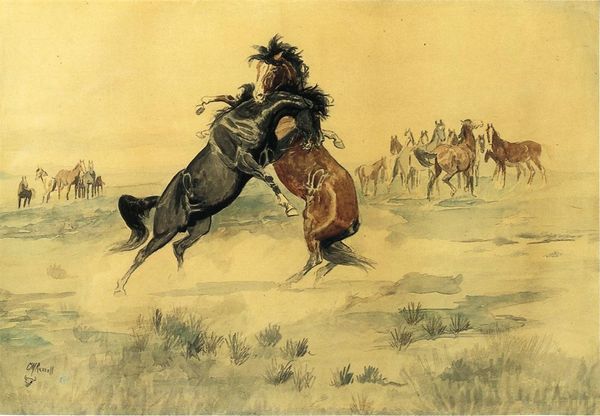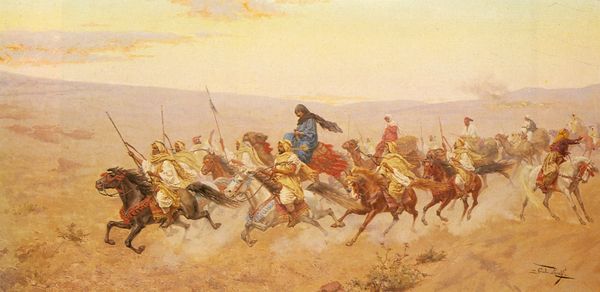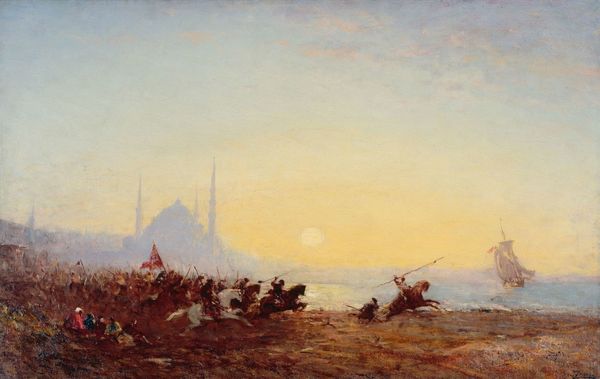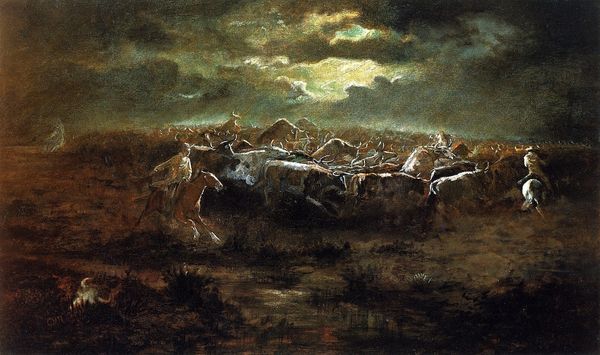
oil-paint
#
oil-paint
#
landscape
#
painted
#
oil painting
#
romanticism
#
history-painting
#
realism
Copyright: Public domain
Editor: This is "The Syrian Shepherd," an oil painting by Jean-Léon Gérôme. The composition is quite striking, with a figure on horseback juxtaposed against a dusty herd. How would you interpret this work, considering its formal elements? Curator: The tension within this piece is quite palpable, arising largely from Gérôme’s handling of light and space. Observe how the diffuse light, almost a haze, obscures and unifies disparate elements of the composition, imbuing the figures with an ethereal quality, yet limiting tonal depth. What impact does this have? Editor: I see it sort of flattens the space, so even with a foreground and background, there’s this feeling that everything’s compressed. The dust feels almost like a wall. Curator: Precisely. And consider how this effect impacts your understanding of form within the work. Details are softened; the bodies of the animals are almost gestural rather than defined. There’s also a remarkable use of line - think of the shepherd's staff versus the curved back of the camel. How does that relationship speak to you? Editor: The straight, vertical line feels more intentional and controlled, in contrast to the curved forms, which blend in with the cloud of dust. Curator: Precisely! Which underscores how line creates order amidst apparent chaos. Gérôme masterfully manipulates these formal elements to create a dynamic relationship. Have we clarified a little of how careful viewing unveils the subtleties? Editor: I think so! Seeing it this way makes me appreciate the thought behind what looks like a straightforward scene. Curator: Indeed. Formal analysis pushes us to move beyond surface representation toward a more comprehensive engagement with the artwork itself.
Comments
No comments
Be the first to comment and join the conversation on the ultimate creative platform.
